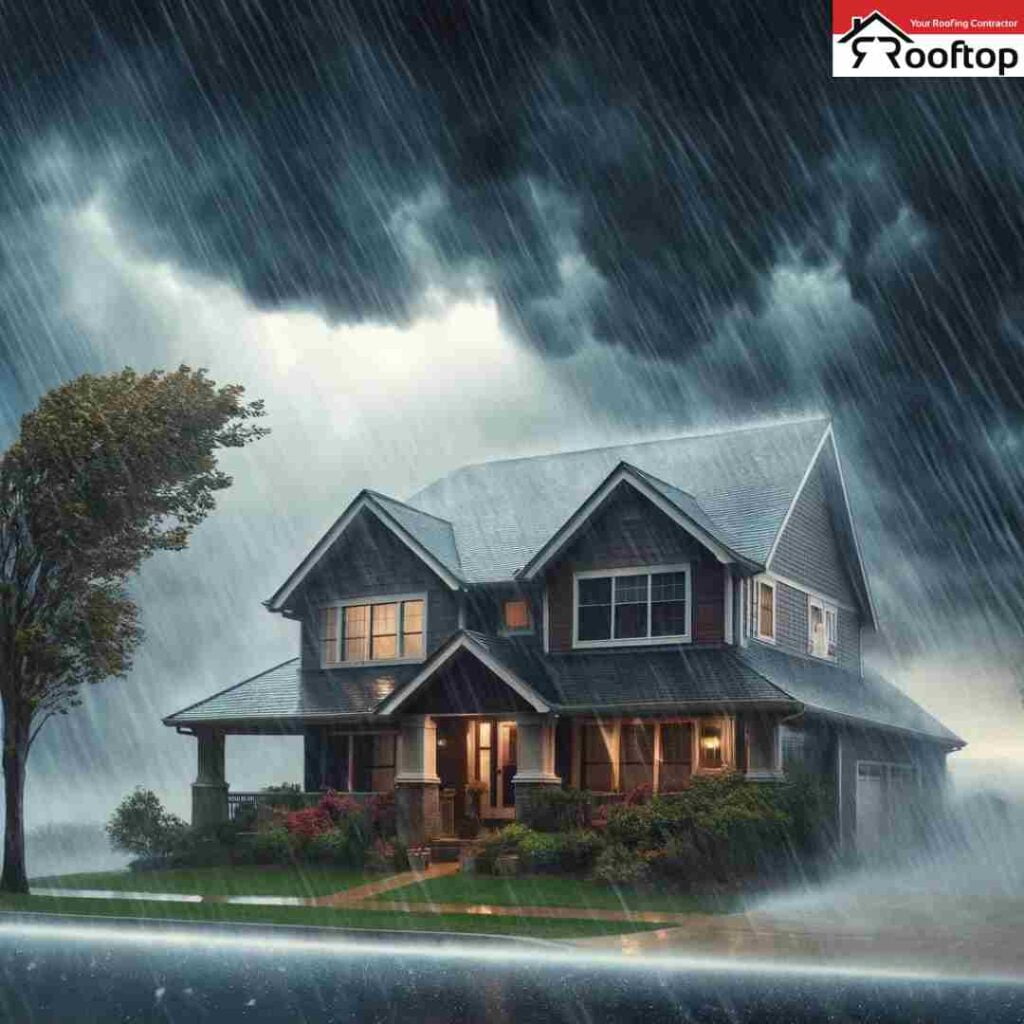Preparation and Protection Tips: The Impact of Weather on Your Roof
Every homeowner knows that a roof over their head is not just about comfort, but about security and protection from the elements. Yet, many may not fully recognize how various weather conditions—from scorching heat waves to freezing snowstorms—can take a toll on this critical component of their home. Weather-related damage can lead to costly repairs and even premature roof replacement if not addressed timely and appropriately. Therefore, understanding the impact of weather on your roof and preparing accordingly is not just advisable; it’s essential.
In this blog post, we will explore the diverse ways in which different weather conditions can affect your roofing materials and structure. More importantly, we will provide actionable tips on how to prepare and protect your roof from these potential threats. By taking proactive steps now, you can extend the lifespan of your roof, enhance its performance, and ensure it continues to protect your home and family, no matter what the sky throws down.
Understanding Weather-Related Roof Damage
Weather exerts a significant influence on the integrity of roofing systems, and each type of weather can impact your roof in distinct ways. Below are some of the most common weather conditions and the typical damage they can cause to your roofing structure:
- Sun and Heat: Prolonged exposure to sunlight and high temperatures can cause roofing materials to deteriorate over time. For example, asphalt shingles may crack, curl, or lose granules, which diminishes their effectiveness in protecting your home from water intrusion.
- Rain: Frequent and heavy rainfalls can lead to water accumulating on your roof, especially if the drainage systems (like gutters and downspouts) are clogged or inefficient. This accumulation can seep under roofing materials, causing rot and leaks, which might not be visible until significant damage has occurred.
- Hail: Hail can be particularly destructive, leaving dents or even punctures in shingles and other roofing materials. This damage can compromise the roof’s ability to shed water and can lead to leaks and deterioration.
- Snow and Ice: Snow buildup can place significant weight on your roof, potentially leading to structural compromise or collapse. Ice dams—ice that forms at the edges of roofs—can prevent melting snow from draining, causing water to back up under the shingles and leak into your home.
- Wind: High winds can lift shingles or other roofing components, creating gaps where water and debris can enter. Over time, these winds can loosen fasteners and adhesives, leading to a reduction in roof stability and increased susceptibility to damage.
Understanding these impacts is the first step in developing a strategy to maintain and protect your roof. Regular inspections and maintenance tailored to your specific climate and the type of weather it brings are crucial for ensuring the longevity and functionality of your roof.
Regular Roof Inspections: The First Line of Defense
Regular inspections are crucial for maintaining the health of your roof and identifying potential issues before they escalate into major problems. These assessments allow you to catch early signs of wear and damage, enabling timely repairs that can significantly extend the life of your roof.
How Often Should You Inspect Your Roof?
It’s advisable to have your roof professionally inspected at least once a year, ideally before the onset of severe weather seasons. For instance, getting an inspection in late summer or early fall is wise if you live in an area prone to winter storms, while a spring inspection can help assess any damages from winter snow and ice.
In addition to these annual checks, you should also inspect your roof after any significant weather event like a major storm, hail, or heavy snowfall. These events can cause immediate and obvious damage that needs prompt attention.
Key Signs of Roof Damage:
During an inspection, either by yourself or a professional, here are some key signs of damage to look for:
- Shingle Condition: Check for cracked, curled, or missing shingles. Look for areas where the granules have worn off or where the shingles appear damp or discolored.
- Gutters and Downspouts: Ensure that gutters and downspouts are securely attached, free of debris, and draining properly. Clogs and improper drainage can lead to water damage.
- Moss and Algae: Presence of moss or algae can be a sign of trapped moisture, which can deteriorate roofing materials over time.
- Flashings: Inspect flashings around chimneys, vents, and skylights to ensure they are sealed properly. Cracks or gaps can allow water to enter your home.
- Structural Integrity: From the attic, check for any signs of sagging or water staining on the underside of the roof, as these can indicate larger structural issues.
Performing regular inspections and addressing minor issues promptly can prevent more severe damage, saving you from costly repairs or even a full roof replacement in the future. Being proactive about roof maintenance is not just about preserving the structure; it’s about ensuring the safety and security of your entire home.
Maintenance Tips for Weatherproofing Your Roof
To ensure your roof remains in optimal condition and withstands various weather conditions, regular maintenance is key. Here are several practical tips for weatherproofing your roof, which can help prevent damage and prolong its lifespan:
Clean Your Gutters and Downspouts: Keeping gutters and downspouts clear is critical to prevent water buildup on your roof. Water overflow can lead to rot and other water-related damage. Clean your gutters at least twice a year and after major storms to remove leaves, twigs, and debris.
Trim Overhanging Branches: Tree branches that hang over your roof can scrape against roofing materials, removing protective layers and potentially causing breaks in shingles. They can also drop debris that accumulates and clogs gutters. Trimming these branches back will reduce these risks and protect your roof’s integrity.
Inspect for Moss and Algae: Moss and algae can retain moisture against the roof surface, leading to decay and leakage. If you notice any growth, it’s important to address it quickly. Use specialized cleaning solutions or hire professionals to remove moss or algae safely without damaging the roofing materials.
Replace Damaged or Missing Shingles Promptly: Inspect your roof regularly for damaged, loose, or missing shingles, especially after severe weather events. Prompt replacement of these shingles can prevent water from seeping into the underlayment and structural parts of the roof.
Apply Protective Sealant: Applying a protective sealant can help extend the life of your roof by adding an extra layer of protection against UV rays, rain, and wind. Consult with a professional to choose the right type of sealant for your roofing material.
By implementing these maintenance tips, you can enhance your roof’s ability to withstand adverse weather conditions and safeguard your home from potential damage. Regular upkeep not only secures the structural integrity of your roof but also contributes to the overall health of your home.
Choosing the Right Materials for Roofing
Selecting the appropriate roofing materials is crucial for ensuring that your roof can withstand local weather conditions and last for many years. Different climates and environmental factors demand specific types of materials for optimal performance and durability. Here’s how to choose the right materials for your roofing needs:
Consider Local Climate: The first step in selecting roofing materials is to consider the climate in your area. For instance, in regions with high temperatures and intense sun exposure, materials like slate or tiles that reflect sunlight and resist heat are ideal. In areas prone to hurricanes or high winds, you might opt for metal roofing or high-wind-rated shingles.
Material Durability and Lifespan:
Different materials offer varying levels of durability and lifespan:
- Asphalt Shingles: Popular due to their cost-effectiveness and ease of installation. They typically last between 15-30 years.
- Metal Roofing: Known for its durability and longevity, metal roofing can last 40-70 years and is excellent for rain and snow shedding.
- Tile and Slate: Extremely durable, with slate roofs lasting over 100 years. They are heavy and require strong structural support but are excellent for heat resistance and aesthetic appeal.
- Wood Shingles and Shakes: Provide a natural look but require more maintenance. They are best for drier climates since they can deteriorate faster under moist conditions.
Weight of Materials: Ensure your home’s structure can support the weight of the material you choose. Slate and tile are much heavier than metal or asphalt and may require additional structural support, which can be a significant consideration in both cost and feasibility.
Aesthetic and Architectural Style: The material should complement the style of your home and neighborhood. Historical homes might benefit from slate or tile for authenticity, while modern homes might look best with metal or architectural shingles.
Cost vs. Value: While initial costs are an important consideration, think about the long-term value of your roofing material. More expensive materials like slate or metal may offer greater longevity and less frequent replacements, potentially saving money over time.
By carefully selecting the right roofing materials, you ensure that your roof not only looks great but also performs well under the specific environmental conditions of your location. This choice is a critical step in protecting your investment and enhancing the overall resilience of your home.
Professional Help and When to Seek It
While regular maintenance and inspections can be handled by most homeowners, there are times when it’s crucial to call in the professionals. Knowing when to seek professional help can save you from potential dangers and costly mistakes. Here are some guidelines on when to involve a roofing expert:
When to Call a Professional:
- Post-Storm Inspections: After severe weather events, it’s advisable to have a professional inspect your roof for potential hidden damage that might not be immediately obvious.
- Major Repairs: If your roof requires extensive repairs, such as replacing large areas of shingles or fixing structural damage, a professional roofing contractor should be hired to ensure the job is done safely and correctly.
- Installing New Roofing Materials: The installation of new roofing materials often involves complex procedures that require specialized knowledge and tools. Professional installation ensures your roof’s integrity and maximizes the lifespan of the materials.
- When Safety is a Concern: Roof work can be dangerous, especially on steeply pitched roofs or multi-story buildings. Professionals have the necessary equipment and training to perform the work safely.
Choosing the Right Roofing Contractor:
- Check Credentials: Ensure the contractor is licensed, insured, and bonded. This protects you from liability and ensures a level of professionalism and knowledge.
- Read Reviews and Get References: Look at reviews online and ask for references from past clients to gauge the contractor’s reputation and quality of work.
- Get Multiple Quotes: Obtain quotes from several contractors to compare prices and understand what’s included in their services.
- Ask About Warranties: Understand the warranties offered on both materials and labor. A reputable contractor should stand behind their work.
By engaging professionals when necessary, you ensure that your roofing work is done with expertise and that your home remains a safe and secure environment.
Conclusion:
Preparing and protecting your roof from weather-related damage is not just about addressing immediate concerns—it’s about investing in the future of your home. By understanding the impact of weather, conducting regular inspections, performing timely maintenance, choosing appropriate materials, and knowing when to seek professional help, you can ensure that your roof remains in optimal condition.
In conclusion, a well-maintained roof not only enhances the safety and security of your home but also contributes to its overall value and efficiency. The effort you put into maintaining your roof pays dividends in the form of reduced repair costs, increased lifespan, and peace of mind during adverse weather conditions. Start taking proactive steps today to protect your roof, and you’ll safeguard your home for many years to come.
By following the guidelines outlined in this post, you can make informed decisions that enhance the durability and functionality of your roof, ensuring that it stands strong against whatever the weather may bring.


